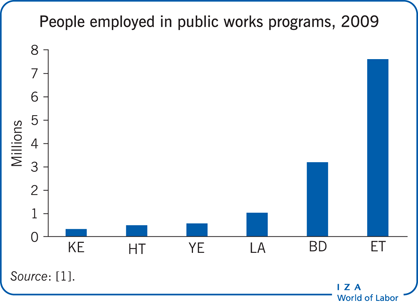Elevator pitch
Public works programs in developing countries can reduce poverty in the long term and help low-skilled workers cope with economic shocks in the short term. But success depends on a scheme’s design and implementation. Key design factors are: properly identifying the target population; selecting the right wage; and establishing efficient implementation institutions. In practice, rationing, corruption, mismanagement, and other implementation flaws often limit the effectiveness of public works programs.
Key findings
Pros
Public works programs provide a safety net for households after economic shocks.
Programs can be adapted to a variety of country contexts and to both aggregate and idiosyncratic shocks.
Public works programs allow households to self-select into employment when they need it.
Programs can be flexible and decentralized.
Despite implementation problems, public works programs typically reach the target population.
Cons
Rationing, corruption, mismanagement, and other implementation problems limit the effectiveness of public works programs in providing employment at specified wages.
Job-rationing and low-income gains may dampen the impact of public works programs on poverty.
Public works programs can reduce the availability of private-sector jobs.
Governments do not always set clear policy goals and instill them into program design and implementation.
